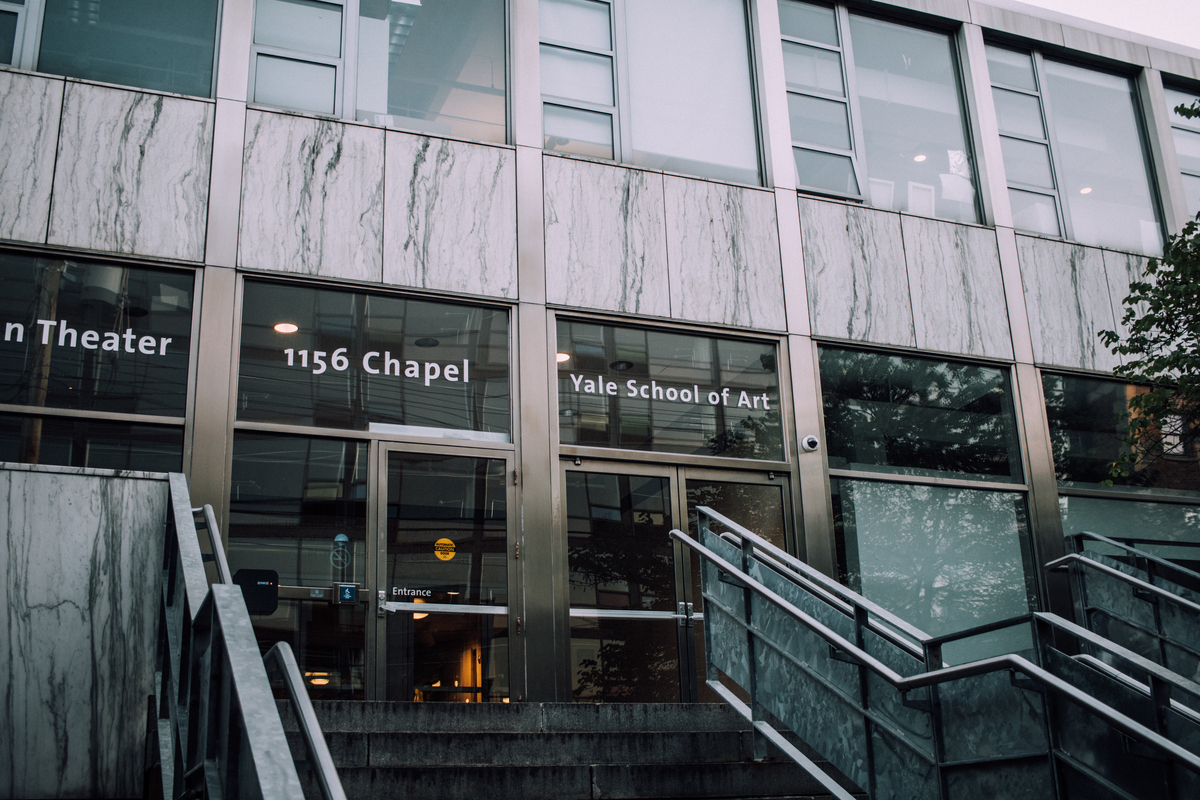Yale School of Art applications close for 2022
The most recent round of applications to the Yale School of Art closed in January. The committee will review applications in February.

Yale Daily News
Hopeful applicants to the Yale School of Art finalized their portfolios and submitted their pieces in January and will have their work reviewed through the month of February.
On Jan. 9, applications closed for the School of Art’s four programs: graphic design, painting/printmaking, photography and sculpture. Applicants were required to submit a portfolio of 16-20 images of their artwork or video files, a personal statement, a resume, an unofficial transcript and letters of recommendation.
According to Sarah Stevens-Morling, assistant dean for communications and digital media at the school, a prospective master’s of fine arts student can only apply to one of the four particular areas of study, each of which has its own specific requirements for the application. Every prospective student, regardless of the program they apply to, submits with their application a one-page statement that addresses their influences, interests and current body of work, as well as a digital portfolio of their work.
“Every MFA program out there is different. Each has their own unique aesthetic, pedagogical approaches, curricular structures and of course the kind of the work that’s being made in and coming out of the program,” said Taryn Wolf, assistant dean for academic affairs at the School of Art. “With each statement and portfolio, we’re looking to understand who these candidates are and how they connect themselves to those ideas and institutional values, which in turn helps the committees decide who might gain the most growth and learning within our specific programs.”
Wolf also emphasized that the committee considers not only the applicant’s educational background, but also what they have been doing since they left school — whether a job or residencies or exhibitions — in order to get a sense of what the applicant has been doing on a professional level or within the art and design fields.
According to Wolf, the School of Art does not recruit students and only admits the number of students that they currently have a seat for: 22 in painting, 10 in photography, 11 in sculptures, 10 in graphic design and 8 in a three-year program called “preliminary, ” designed for students who don’t have a formal undergraduate training in graphic design. While around 12 percent of applicants receive an interview opportunity, roughly 5-6 percent are ultimately accepted.
Wolf also emphasized that one of the biggest misconceptions about the School of Art’s admission process is the idea that they are looking for the most “polished,” “complete,” “strongest,” “amazing” and “ready for gallery wall” work.
“Work which is already shaped or resolved is often not as open to change. Whether the practice itself has reached a high level of sophistication or the candidate is represented by a gallery, perhaps they have established a collector base. … We have found that this is all counter to the notion of experimentation or accepting challenge to one’s work,” Wolf said.
Wolf encourages students at the school to try different things, be receptive to feedback and critique and understand that failing is not only expected, but a necessary part of the learning process.
She added that the school is “looking for that balance within the applicant population, the upper but maybe not the tippy-top segment, where we’re seeing that potential for openness and a kind of drive, excitement and curiosity there, but they definitely still have work to do.”
Aki Sasamato, assistant professor in sculpture and director of graduate studies in sculpture, echoed Wolf’s sentiments.
“While we are looking at every applicant’s portfolio for their own integrity and depth of investigation, we also are sensitive to different perspectives. We strive for a wide range of voices and each year we build a unique community that is both a reaction to and reflection of our current community,” Sasamato wrote in an email.
According to Wolf, while the School of Art saw a slightly lower applicant pool than usual this year, there were increases in both the number of unsubmitted applications on the website and number of international applicants — a total of 470. As the percentage of international students increased, the School of Art also saw the influx of new populations from different parts of the world that were interested in their programs: more than half of the applicants this year were from China and there was an increase in applicants from nations in Africa.
In addition to practicing need-blind admission, meaning that the committee does not consider a student’s ability to pay in the decision-making process, the School of Art also offered fee waivers for the first time this year. The application fee typically costs $100, which, in conversations with current students, the admissions committee discovered could be equal to a month’s rent for several international students’ families. As a result, taking into consideration the exchange rate and other financial pressures faced by international students, the School of Art implemented a policy where it waived the fee for any student applying from one of the countries with the bottom 20 lowest exchange rates with the U.S.
Wolf also mentioned that the School of Art has been doing more outreach to historically Black colleges and universities and to the art programs and faculty in those areas, trying to inform students who may be interested in a master’s of fine arts about the school.
“Our intention with this small change was to open up access to the possibility of being considered for admission,” Wolf said.
The Yale School of Art is located at 1156 Chapel St.







